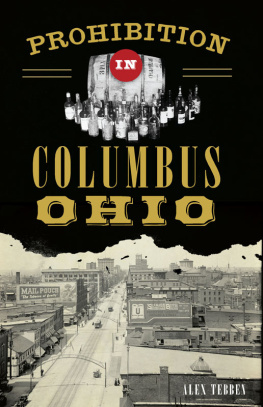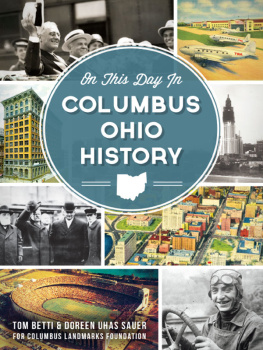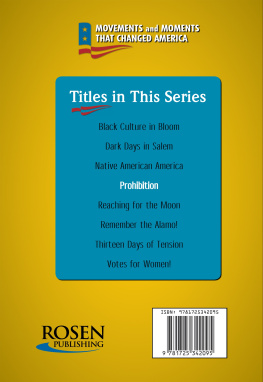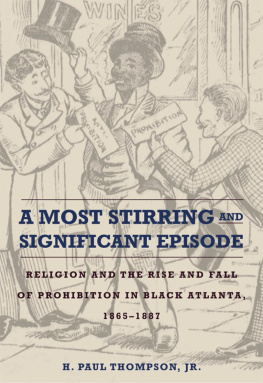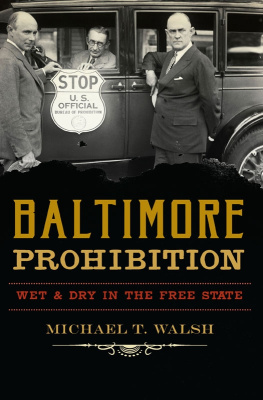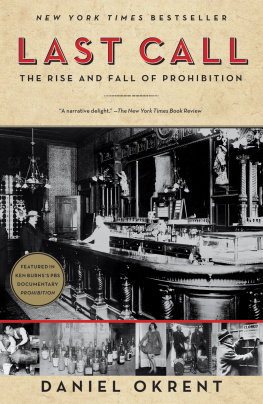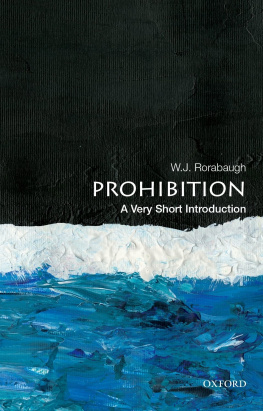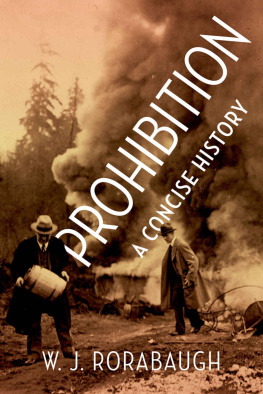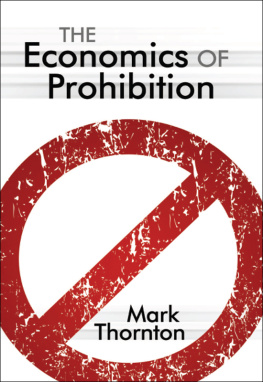


Published by American Palate
A Division of The History Press
Charleston, SC
www.historypress.net
Copyright 2017 by Alexander Tebben
All rights reserved
First published 2017
e-book edition 2017
ISBN 978.1.43966.233.5
Library of Congress Control Number: 2017940944
print edition ISBN 978.1.46713.721.8
Notice: The information in this book is true and complete to the best of our knowledge. It is offered without guarantee on the part of the author or The History Press. The author and The History Press disclaim all liability in connection with the use of this book.
All rights reserved. No part of this book may be reproduced or transmitted in any form whatsoever without prior written permission from the publisher except in the case of brief quotations embodied in critical articles and reviews.
Erin, RHMILY
INTRODUCTION
Columbus, Ohio, is many thingsthe capital of Ohio, Arch City, Test Market USA and home of the Ohio State Buckeyes. Hard drinking has never been one of Columbuss claims to fame. The word prohibition conjures up images of gangsters, daring car chases with bootleggers and glamorous speakeasies. Rarely does it make you think of the city of Columbus. That is not to say that Columbus did not have its bootleggers, speakeasies and occasional run-ins with the mob, because it did, but the story of prohibition in Columbus is about so much moreit is actually many different stories.
Prohibition did not happen overnight. There was no sudden consensus that the country needed to stop drinking. The fight for prohibition lasted generations. The story of prohibition in Columbus is the story of the temperance movement, the womens groups that crusaded for decades to end the scourge of the drink and the Anti-Saloon League, all of which finally brought about the victory over alcohol. Even though brewing beer was never a terribly large industry in Columbus, the story of prohibition in Columbus is the story of the brewers and how they shaped their neighborhood.
This story did not end in 1933 with the repeal of the Eighteenth Amendment. It continued, relating the trials of a neighborhood trying to rebuild after being ravaged by prohibition. It is also the story of how, eighty years later, Columbus has seen a resurgence in breweries and distilleries, helping to bring back its drinking culture.
CHAPTER 1
THE TEMPERANCE MOVEMENT
Prohibition in Columbus started in May 1919, but to start our story there would be a disservice to the generations of men and women who fought to get there. Ohio was a center for the temperance movement decades before national Prohibition became a reality.
One of the greatest challenges for anyone advocating for temperance was that there were few alternatives to alcohol. Columbus did not get filtered water until 1908. Brewers would frequently promote their drinks as a healthier option than water. In one advertisement in 1878, the Born Brewing Company claimed:
No one can dispute the fact that beer possesses more nutrition than any other drink in use.A beer drinker will never become a drunkard if he leaves whisky alone. Nine doctors out of every ten will recommend beer to the consumptive, when all other medicines have failed, and many has it saved from an early grave by its invigorating and life giving qualities. Temperance advocates, in their enthusiasm lose sight of the fact that beer is health, and seek to abolish the manufacture. It is an erroneous idea, and like all other ideas formed in an enthusiastic frame of mind, will depart in time like drifting smoke before an idle wind.
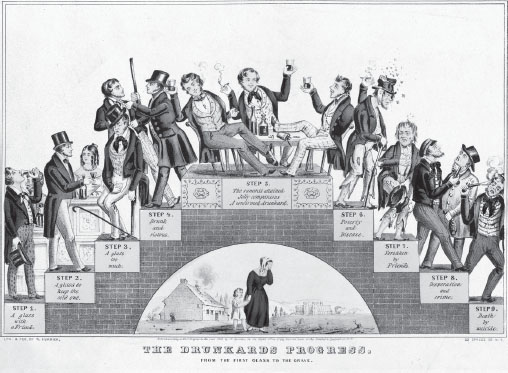
Typical of the types of images that temperance groups produced, The Drunkards Progress, by Currier & Ives, shows mans descent into alcoholism and, eventually, death. Courtesy of the Library of Congress.
When the temperance movement began, it was clear that the brewers had the advantage. Although the brewers held on to the advantage for years, they would eventually lose it.
Ohios first statewide temperance organization began in 1852, almost seventy years before Prohibition, in the most unlikely of places. In January 1852, in the pages of the Columbus-based Ohio Cultivator, a semimonthly newsletter that was devoted to agriculture, and horticulture and domestic and rural economy, came a call from Josephine Cushman Bateman, wife of the magazines editor, Michael Bateman, for a womens state temperance society. There had been local temperance organizations for years, but this was the first attempt to organize a statewide organization.
Mrs. Bateman called on all the local organizations to send delegates to Columbus the next January, where together they would form phalanx after phalanxin this great good work.
There was a common thread here that ran throughout the entire fight for state prohibition. Initially, it was women who led the fight to ban alcohol. It was mostly men at the time who were the main drinkers, yet it was seen as the womens role at the time to raise the children to lead morally sound lives. At the second meeting, the society further elaborated its plan. It was resolved that the fight for temperance was bigger than loyalty to any political party and that they could not support any candidate who did not back prohibition. With the gifts of hindsight, we can see that the methods proposed in the 1850s were quite similar to those that would be embraced, ultimately to victory, by the Anti-Saloon League. We also know that the State Womens Temperance Society of Ohio was destined to fail in its mission. History threw a curveball at the society: the Civil War.
During the bloody conflicts of the Civil War, temperance simply was just not a pressing issue. Because of this, many temperance organizations did make it to the end of the war, the State Womens Temperance Society among them. and yield it did. The temperance movement stumbled during the 1860s, and many groups folded. In Columbus, though, the number of breweries actually increased during the war.
In the wake of the Civil War, it took almost a decade for the temperance movement in Ohio to regain its feet. There were many temperance organizations that began during the 1870s. The Prohibition Party, which, Although the Prohibition Party never achieved any real successes at the ballot boxes, it did help to ensure that temperance was kept in the national spotlight.
CHAPTER 2
THE WOMENS CRUSADE
AND THE WCTU
The Prohibition Party was not the only powerful temperance organization that was founded in the early 1870s. The origins of the Womans Christian Temperance Union (WCTU), which became one of the most powerful temperance organizations, can be traced back to an exact day: December 23, 1873. In an act of temperance agitation that would become known as the Womens Crusade, women in Hillsboro, Ohio, took to the streets, visiting saloons to pray for the patrons and cause general disturbances for saloonkeepers, including asking them to sign pledges to stop selling alcohol.
Matilda Carpenter, the only one of the Crusaders who lived to see national Prohibition, recalled that day. In the crowded saloons, the women read their declaration:
Next page
